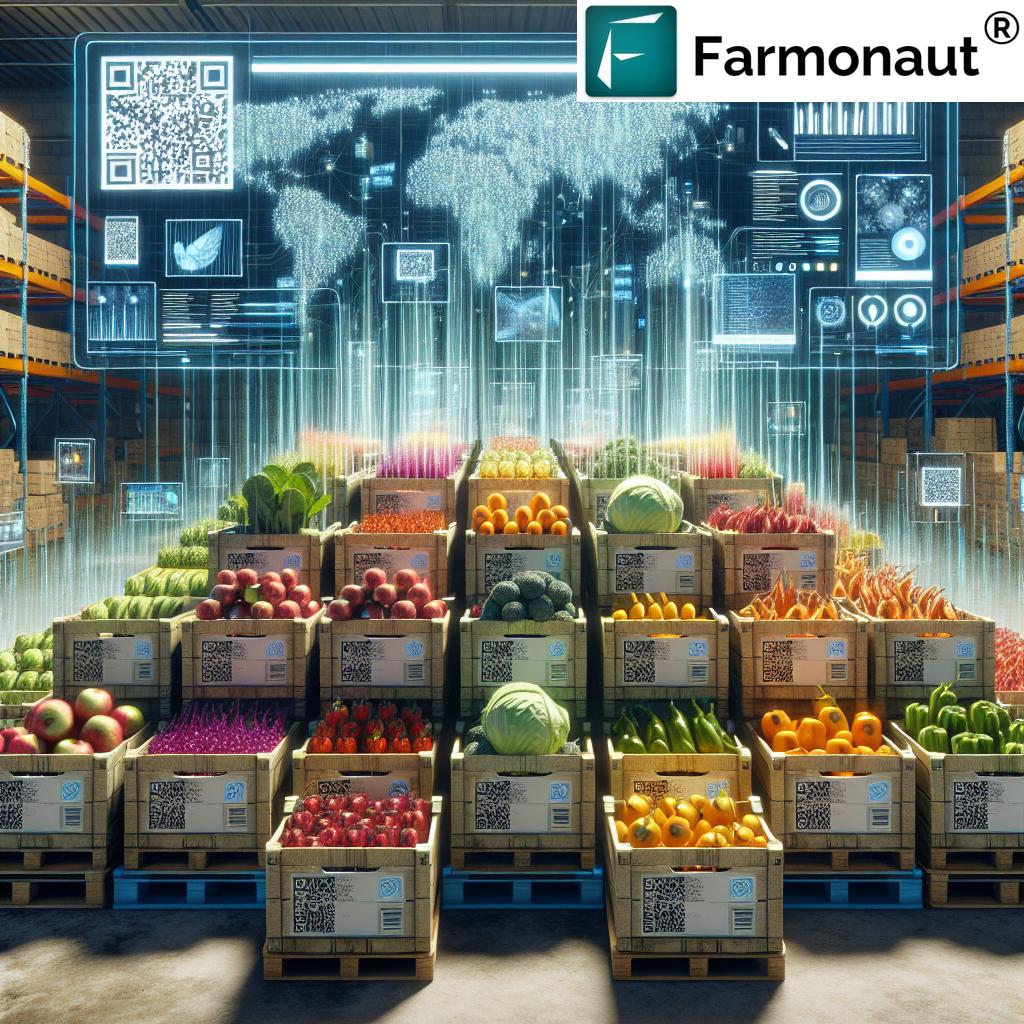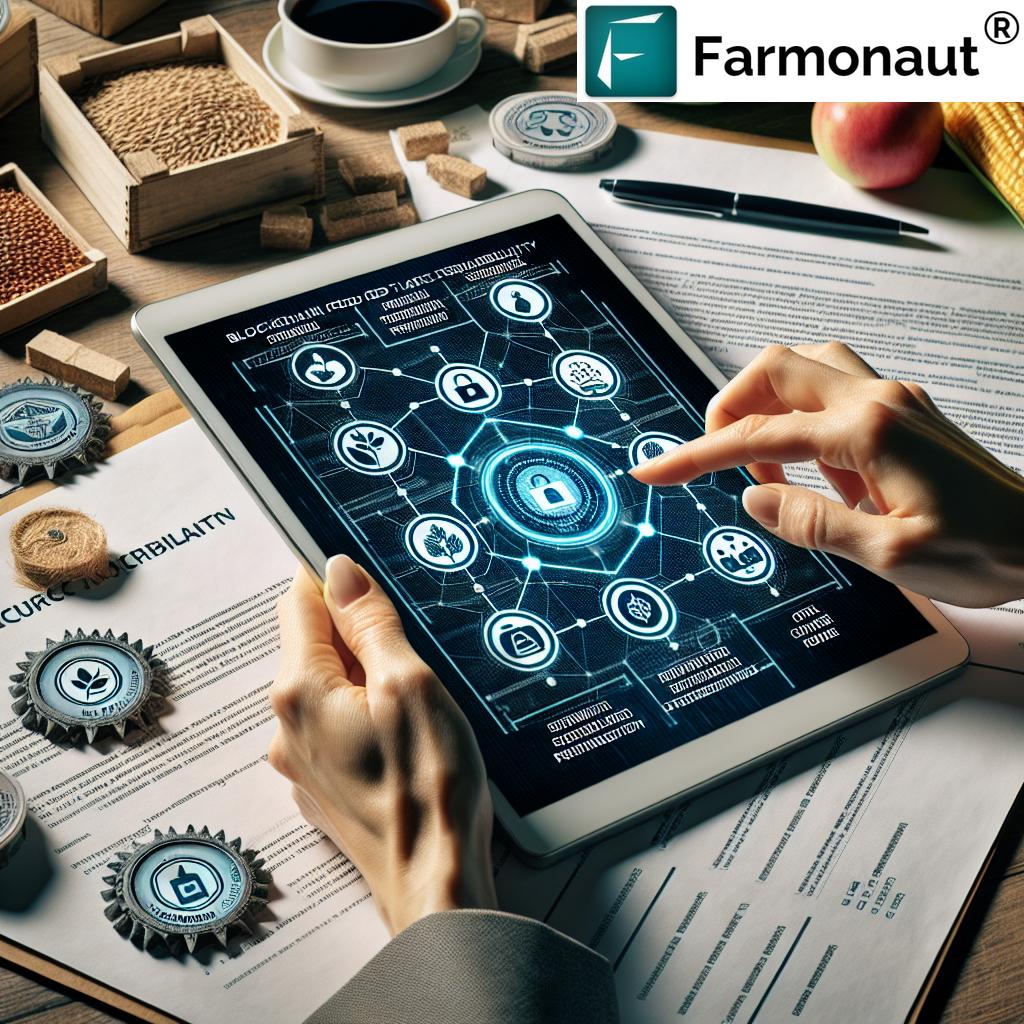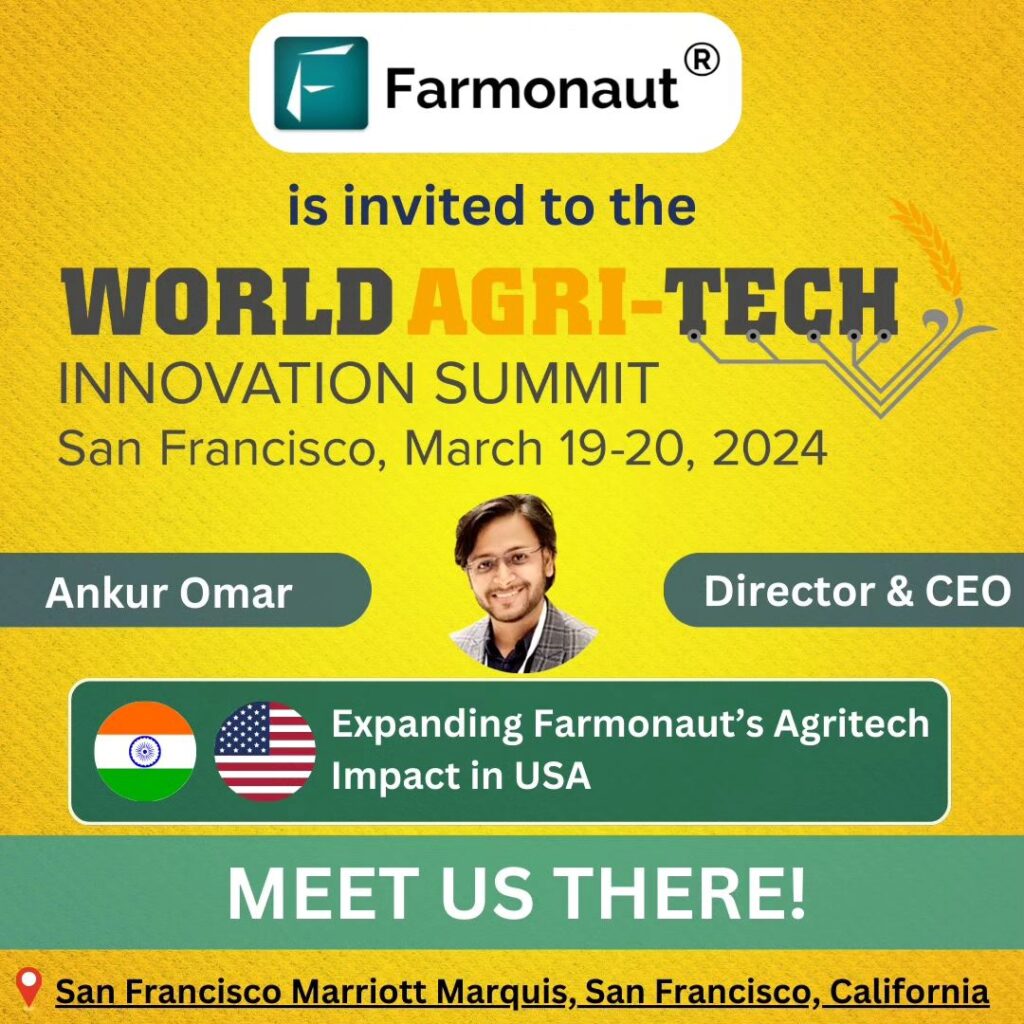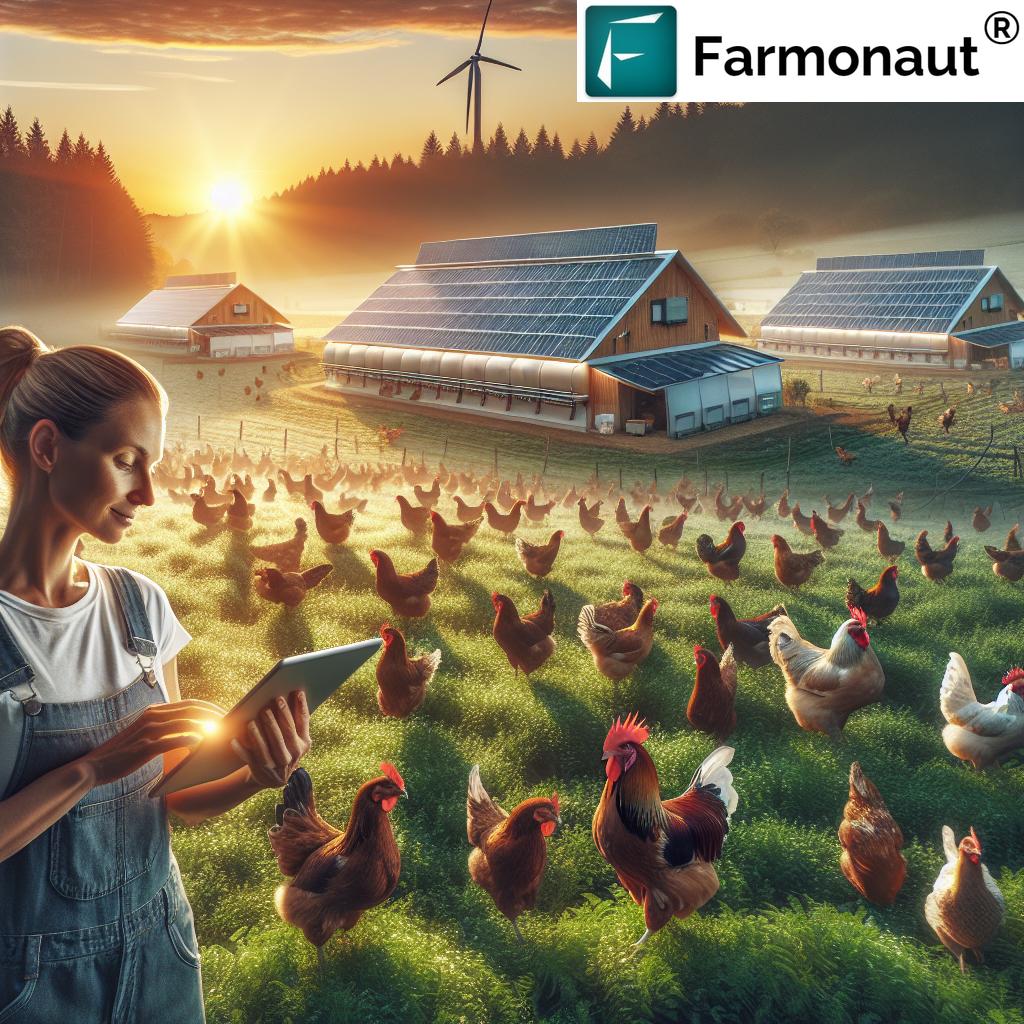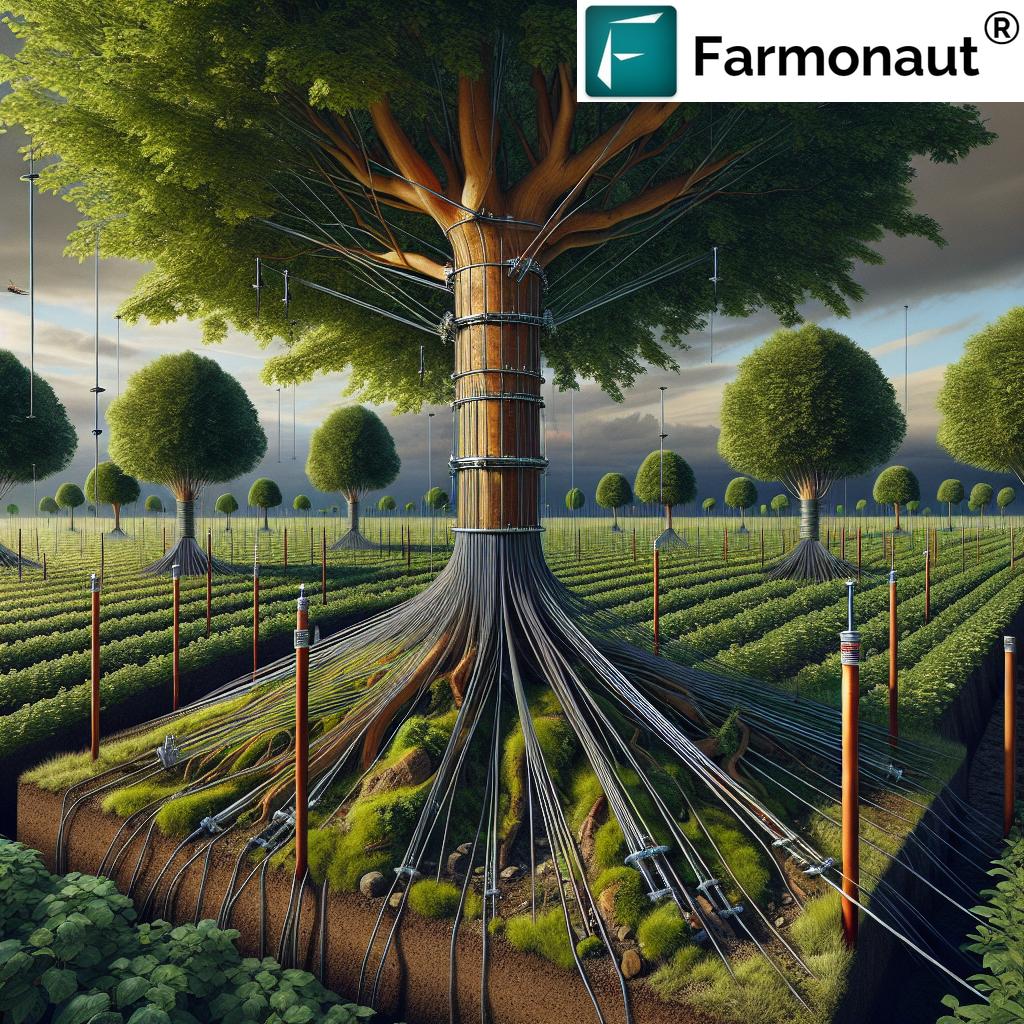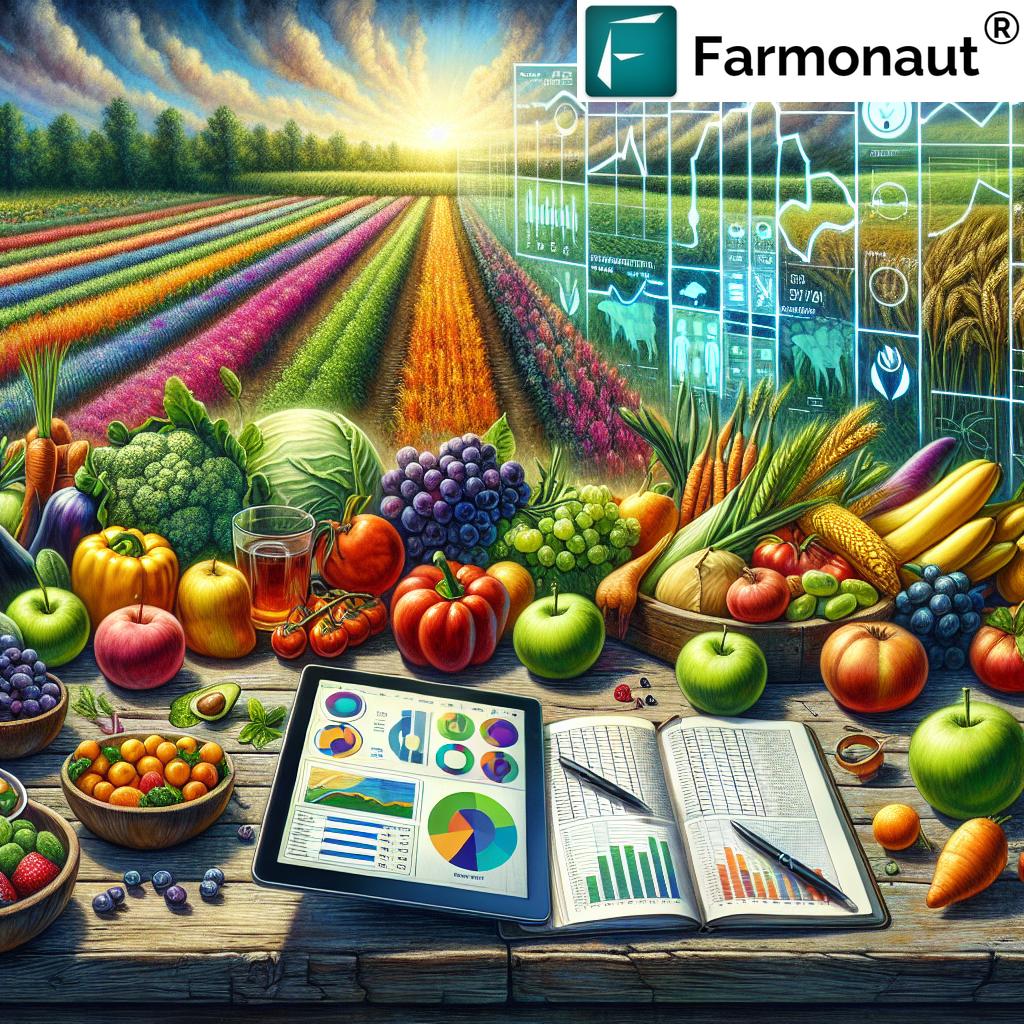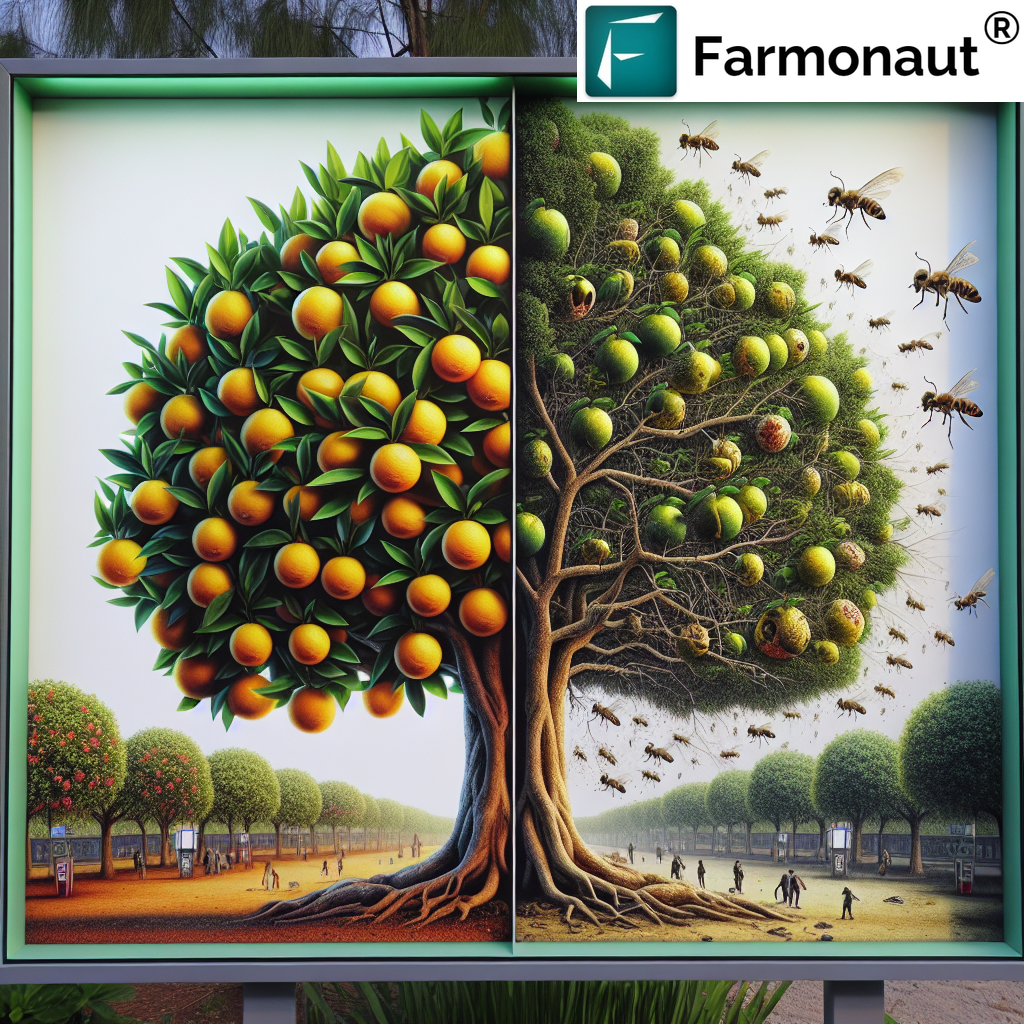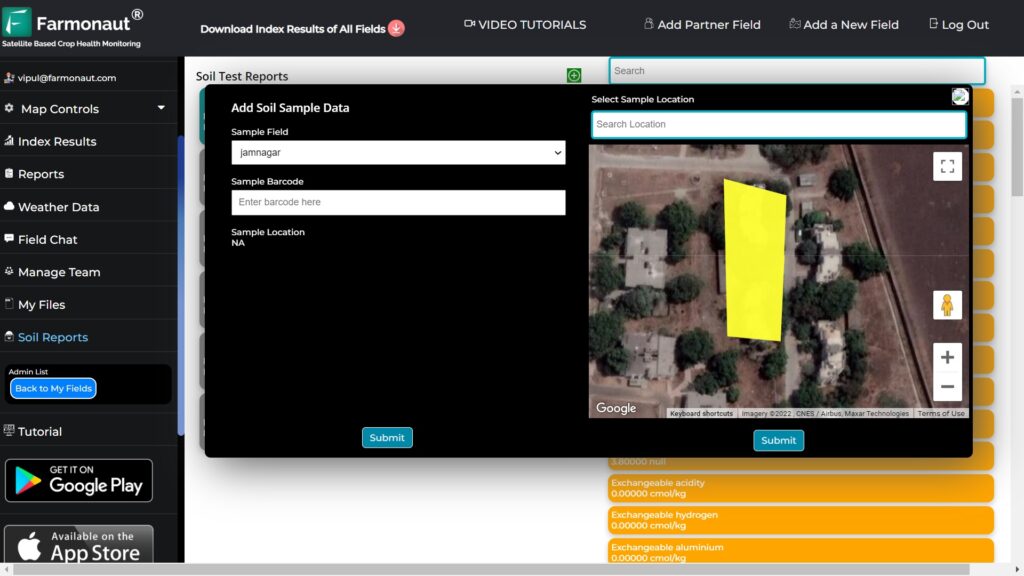Traceability in Agriculture: 7 Shocking Food Chain Benefits
“Blockchain traceability can reduce food recall times by up to 80%, ensuring faster response to contamination risks.”
Table of Contents
- Introduction to Traceability in Agriculture
- Why is Traceability in Agriculture Important?
- 7 Shocking Food Chain Benefits of Traceability
- Comparison Table: Traceability Technologies & Food Chain Benefits
- Technologies Powering Food Traceability Systems
- Challenges in Implementing Traceability Systems
- Farmonaut: Unlocking Traceability and Transparency with Technology
- Frequently Asked Questions (FAQ)
- Conclusion
Introduction to Traceability in Agriculture
As digitization transforms the global agricultural landscape, traceability in agriculture has become a cornerstone for transparency and safety in the food supply chain. Traceability is the ability to track, document, and recall the journey of food products from their origin on the farm, through processing and distribution, right up to the consumer’s plate. This critical process involves recording every stage in production, processing, and delivery—enabling us to ensure safety, quality, and consumer confidence.
Recent advancements in technology like blockchain, IoT (Internet of Things), AI (Artificial Intelligence), and big data analytics have revolutionized how we manage and track agricultural products. With consumer demand for food transparency at an all-time high, the agricultural sector is innovating rapidly to meet evolving expectations and regulatory requirements. Today, let’s explore 7 truly shocking benefits of traceability in the food chain, and why embracing these systems is no longer optional—it’s essential.
Why is Traceability in Agriculture Important?
Traceability isn’t just a technological enhancement; it’s the backbone of modern agriculture and the food supply chain. By delivering transparency, data-driven quality assurance, and rapid response to foodborne threats, traceability systems protect public health, meet regulatory compliance standards, and empower everyone from farmers to retailers.
- It ensures safety by rapid identification, tracking, and removal of contaminated products from the market.
- It delivers on the growing consumer demand for food transparency and better informed purchasing choices.
- It is fundamental for maintaining regulatory compliance in food supply chains and international market access.
- It underpins sustainability by supporting environmentally sound agricultural practices and resource optimization.
“Over 60% of consumers trust food brands more when traceability technology is used in the supply chain.”
7 Shocking Food Chain Benefits of Traceability in Agriculture
Let’s dive into the seven most impactful benefits that advanced food traceability systems bring to the agricultural supply chain:
-
Food Safety and Public Health Assurance
Traceability enables us to track the entire journey of food from origin to plate, ensuring immediate identification and removal of contaminated products during a foodborne illness outbreak. With real-time data capture at each stage (production, processing, and distribution), authorities can trace the source of contamination, implement targeted recalls, and minimize public health risks.
- Reduces the risk of widespread illness or public outbreaks.
- Limits economic losses from lengthy recalls and brand damage.
Example: When products are digitally documented at every supply chain stage, a contaminated batch of lettuce can be traced instantly to its farm and lot, enabling its rapid withdrawal from stores.
-
Unprecedented Consumer Confidence and Transparency
With digital traceability in agriculture, consumers gain access to comprehensive information about each food product—its origin, production methods, and journey through the supply chain. Blockchain in food traceability ensures data can’t be manipulated; QR codes let buyers retrieve this data instantly.
- Consumers can verify if foods are organically produced, fair-trade certified, or locally sourced.
- Satisfies growing consumer demand for food transparency and ethical sourcing.
Example: Shoppers scan a QR code and view a coffee bean’s journey—from the farm, through beans’ processing, to their favorite café.
-
Regulatory Compliance and Global Market Access
Governments and export markets now have stricter food safety regulations. Compliance often mandates robust traceability systems with trackable data at every stage. Producers, processors, and exporters equipped with digital tracing technology can easily demonstrate compliance with local and international bodies.
- Protects access to global markets and lucrative contracts.
- Simplifies audits and regulatory reporting.
Example: EU importers require full supply chain records for certain foods; only traceable, compliant producers can serve these regions.
-
Superior Quality Assurance and Consistency
By tracking products at every process stage, farmers and food companies can swiftly identify issues in quality control. When problems arise (e.g., peroxide levels in oil), the precise lot and farmer responsible can be pinpointed, helping optimize production practices and maintain consistent quality.
- Improves stakeholder trust in brands and reduces variability in product quality.
- Enhances traceability across the food supply chain.
-
Enhanced Sustainability and Environmental Impact Monitoring
With robust traceability, all inputs and outputs across the farm life cycle are documented. This makes it easier to verify sustainable agricultural practices and calculate metrics for carbon footprinting or resource use.
- Enables sustainable certification via transparent data.
- Supports farmers in qualifying for carbon credits and environmental programs.
Example: Detailed recording of fertilizer and pesticide use helps verify eco-friendly products and ensures accurate resource management.
-
Significant Economic Benefits for Producers and Retailers
Traceability streamlines recall processes, reduces production downtime, and protects long-term brand reputation. These systems decrease costs from contamination events and open up new market opportunities among consumers and retailers who require demonstrable quality and transparency.
- Enhanced ability to command a premium on traceable products.
- Fewer economic losses from foodborne illness and recalls.
- Unlocks access to sustainability-driven consumers and international markets.
- See more on blockchain-based product traceability for producers.
-
Streamlined Recall Management and Faster Crisis Response
Food traceability systems powered by digital technologies allow immediate identification and retrieval of affected products during outbreaks or contamination events. This minimizes public risk, reduces wastage, and can improve recall times by as much as 80% compared to conventional systems.
- Faster, targeted recalls protect public health and reduce financial fallout.
- Eliminates the need for blanket recalls across entire regions.
Comparison Table: Traceability Technology Impact on Food Chain Benefits
Technologies Powering Food Traceability Systems
Today’s agricultural supply chain transparency is made possible by several breakthrough technologies:
-
Blockchain in Food Traceability
Blockchain is an immutable, decentralized digital ledger that records each transaction or event in the food chain. Each record is time-stamped and tamper-proof, guaranteeing data integrity and full transparency. With blockchain-based agriculture traceability solutions, fraud risks vanish and consumer trust climbs.
-
IoT in Agriculture Traceability
The IoT (Internet of Things) refers to sensors, RFID tags, and other smart devices monitoring produce conditions, location, and handling in real-time. For example, cold chain temperature sensors flag shipping faults before products spoil.
Explore cutting-edge large-scale IoT-powered farm management systems for detailed insights. -
RFID Tags
Radio Frequency Identification uses electromagnetic fields to identify and track labeled items wirelessly. Every product can carry its own digital history, from harvest to retail, enhancing tracking precision.
-
QR Code & Mobile Traceability
QR codes on packaging link to digital supply chain records, allowing consumers to verify the product’s journey with a scan. This is crucial in supporting consumer demand for food transparency.
-
AI and Big Data Analytics
Artificial Intelligence and big data analytics transform how we manage traceability data. AI can detect anomalies, predict outbreaks or fraud, optimize supply chain logistics, and align products with market preferences.
Don’t miss how AI-driven farm management leverages satellite imagery for smarter decision-making.
→ Learn about integrating food traceability data with Farmonaut’s public API.
→ Access Farmonaut’s API Developer Docs for integrating satellite and weather data into your systems.
Fleet & Resource Management Tools also ensure products are handled and tracked efficiently en route to distribution, minimizing risks like temperature shocks or mix-ups. Discover fleet management solutions for optimized logistics and traceable storage conditions.
Farmonaut stands at the forefront of food traceability technology integration by combining satellite-based crop health monitoring, blockchain traceability, and AI-based advisory, making traceability in agriculture accessible and scalable for every farmer, agribusiness, and industry stakeholder.
Challenges in Implementing Traceability Systems in Agriculture
While traceability technology in farming offers enormous rewards, we face significant hurdles in its widespread adoption:
- Cost of Implementation: Many small-scale farmers find the costs for hardware, training, and software daunting. Affordable, scalable solutions—like satellite-based monitoring—are vital for broader adoption.
- Standardization: Traceability protocols can differ by region or market, making global adoption and reporting complex.
- Data Security: Protecting sensitive supply chain data from unauthorized access is crucial, especially as technologies like blockchain become more ubiquitous.
- Technological Barriers & Worker Training: Many regions lack the infrastructure or workforce skills to implement and operate new traceability systems. Simplified user interfaces and mobile-based systems drive long-term change.
To overcome these challenges, it’s essential to invest in mobile-ready tools, user education, and low-cost, versatile traceability solutions tailored to diverse regions and markets.
Farmonaut: Empowering Agricultural Traceability and Data-Driven Farming
With an unwavering commitment to agricultural supply chain transparency, Farmonaut offers a suite of services that fuse advanced technology with practical, on-the-ground management.
- Satellite-Based Crop Health Monitoring: Real-time multispectral imagery provides insights on crop vigor, soil moisture, and field health, forming a transparent digital record for traceability.
- AI-Based Advisory (Jeevn AI): Automated, context-aware recommendations for optimal crop management, resource allocation, and input application.
- Blockchain-Based Product Traceability: End-to-end, tamper-proof tracing of agricultural products for powerful food safety and quality assurance—learn more about blockchain traceability here.
- Fleet and Resource Management: Monitor and control all logistics operations, ensuring tracked, safe handling of agricultural goods—ideal for both producers and major retailers.
- Carbon Footprinting: Automated calculation and digital record-keeping of a farm’s or agribusiness’s environmental impact, simplifying sustainability reporting and program qualification.
- Subscription Flexibility: The Farmonaut model supports growers, cooperatives, corporate clients, and even governments, with scalable, data-driven solutions available by subscription or API.
→ Ready to integrate real-time agricultural traceability data? Explore Farmonaut’s public API.
→ Developer? Dive into the API Docs for building traceability into your agri-business solution.
Frequently Asked Questions (FAQ) About Traceability in Agriculture
1. What is agricultural traceability, and why is it important?
Traceability in agriculture refers to the process of documenting and tracking the journey of food products from their origin on the farm through processing, distribution, and final purchase by the consumer. It is important for ensuring food safety, quality assurance, quick response in the event of a contamination outbreak, regulatory compliance, and building consumer trust.
2. How does blockchain technology enhance food traceability?
Blockchain in food traceability creates an unchangeable, digital ledger of all transactions and processes in the supply chain. This ensures that all data is accurate and cannot be tampered with, providing full transparency and reliable documentation of every item’s journey.
3. What are the main challenges to implementing digital traceability in agriculture?
Primary challenges include costs for small-scale farmers, lack of standardized protocols across regions, data security requirements, and the need for better technological adoption and training among agricultural workers.
4. How does IoT contribute to agricultural supply chain transparency?
IoT in agriculture traceability leverages smart devices (like temperature and humidity sensors, RFID tags) that automatically track, record, and transmit data at each stage of the chain—minimizing risks, improving quality, and enabling real-time insights.
5. How does Farmonaut support food traceability for producers and agribusiness?
Farmonaut provides satellite-based crop monitoring, AI-powered farm advisory, blockchain-based product traceability, environmental impact tracking, and logistics management—helping producers of all sizes adopt scalable, cost-effective, and regulatory-compliant traceability systems.
Conclusion: Building a Safer, Transparent, and Sustainable Food System
Traceability in agriculture is no longer just a regulatory checkbox; it’s the engine behind food safety and quality assurance, consumer confidence, regulatory compliance, and long-term sustainability in the food supply chain. As we continue to witness technological advancements—particularly in blockchain, IoT, AI, and big data—our ability to trace, track, and secure the food chain will only become more robust.
Embracing digital traceability in agriculture not only protects public health and optimizes resource use, but also unlocks global opportunities for producers, retailers, and governments. With platforms like Farmonaut bringing affordable, adaptable, and scalable solutions to the world, now is the time for every stakeholder in the agrifood ecosystem to commit to traceability.
For a truly transparent and resilient food system, traceability isn’t just a feature—it’s your competitive advantage.





